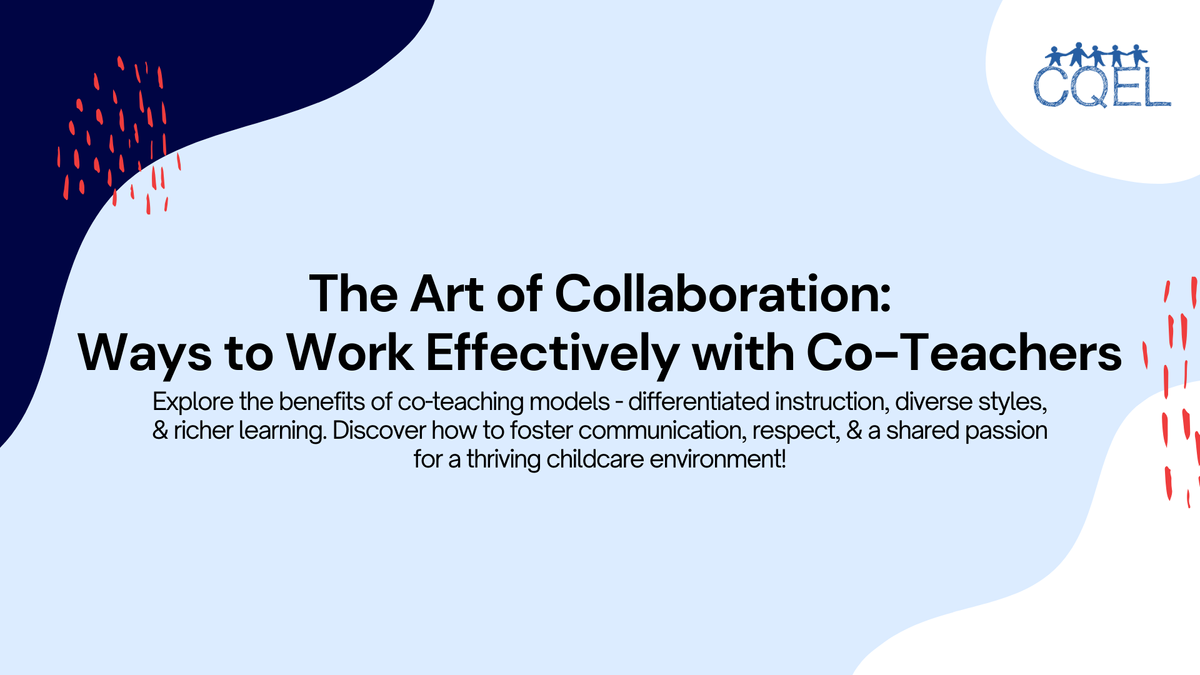The Art of Collaboration: Ways to Work Effectively with Co-Teachers
Explore the benefits of co-teaching models - differentiated instruction, diverse styles, & richer learning. Discover how to foster communication, respect, & a shared passion for a thriving childcare environment!

The landscape of early childhood education is evolving, with co-teaching models gaining popularity. This approach brings together two educators, each with unique strengths and perspectives, to create a dynamic learning environment for young children. The benefits are undeniable – teachers can leverage their expertise to provide differentiated instruction, children gain exposure to diverse teaching styles, and collaboration fosters a richer learning experience. But effective co-teaching isn't simply about putting two teachers in a room; it's a skill that requires open communication, mutual respect, and a shared passion for early childhood education.
Co-teaching models come in various flavors. One-teach, one-observe involves one teacher leading instruction while the other observes and provides support. Station teaching allows each teacher to lead a small group at different learning stations. These models allow teachers to play to their strengths, with one excelling at leading large group activities while the other thrives in small group settings. Ultimately, the chosen model depends on your strengths, the needs of your students, and the specific learning objectives. The beauty of co-teaching lies in its flexibility – it can be tailored to maximize learning opportunities for all children.
The foundation of a successful co-teaching partnership is a strong working relationship. Open communication and clear expectations are essential. Schedule regular planning meetings to discuss lesson plans, assessments, and student needs. Develop a communication style that fosters trust and rapport. Active listening, respectful dialogue, and a willingness to compromise are key ingredients for a successful collaboration. Celebrate each other's strengths, fostering a collaborative spirit where both voices are valued and respected. Remember, you're not competitors; you're a team working towards a common goal – providing the best possible learning experience for your young students.
Effective co-teaching hinges on strong communication and planning. Regular planning meetings are crucial for ensuring alignment in your teaching approach. Discuss lesson plans, learning objectives, and assessment strategies. Actively listen to your co-teacher's ideas and be open to new perspectives. Remember, collaboration is a two-way street. When differences in teaching styles arise, focus on the best interests of the children. Seek common ground and be willing to compromise to create a cohesive learning experience for your students.
Co-teaching isn't always sunshine and rainbows. Disagreements may arise – that's natural in any collaborative environment. The key is to address them constructively. Maintain open communication and focus on the needs of the children. Remember, a successful co-teaching partnership requires a willingness to compromise and a commitment to finding solutions that benefit everyone.
California offers a wealth of resources to support co-teaching in early childhood education settings. The California Department of Education's Early Learning and Development Standards (https://www.cde.ca.gov/sp/cd/re/) outline a framework for creating a collaborative learning environment for all children. The National Center for Learning Disabilities website (https://exceptionalchildren.org/topics/co-teaching) provides additional resources and information on co-teaching strategies and best practices.
Effective co-teaching creates a dynamic learning environment where children thrive. By fostering open communication, celebrating each other's strengths, and working collaboratively, you can create a classroom that is both stimulating and nurturing for young learners. Embrace co-teaching as an opportunity for professional growth and a chance to create a truly magical learning experience for your students. After all, two passionate educators working together can achieve remarkable things for the children they serve.
